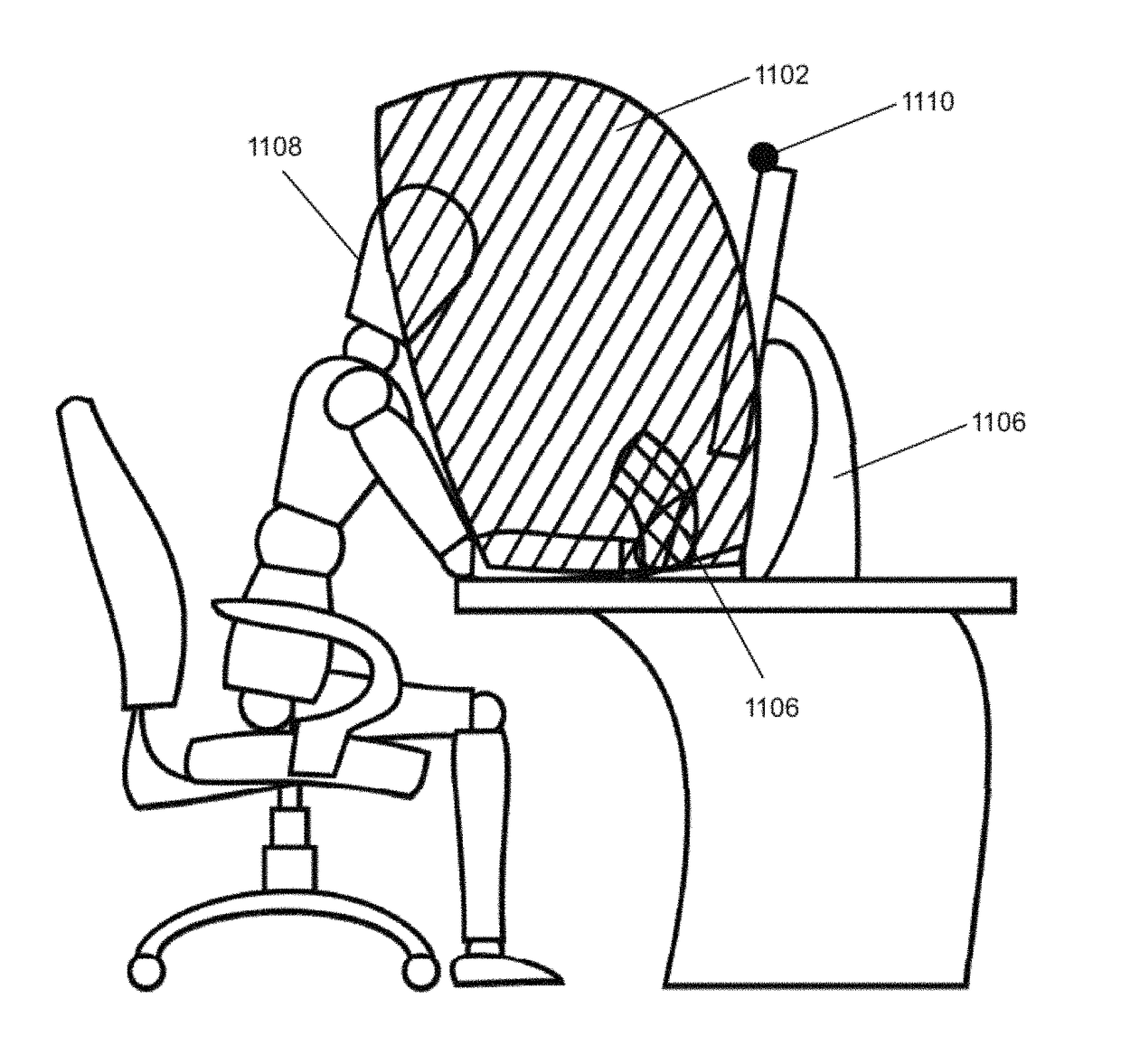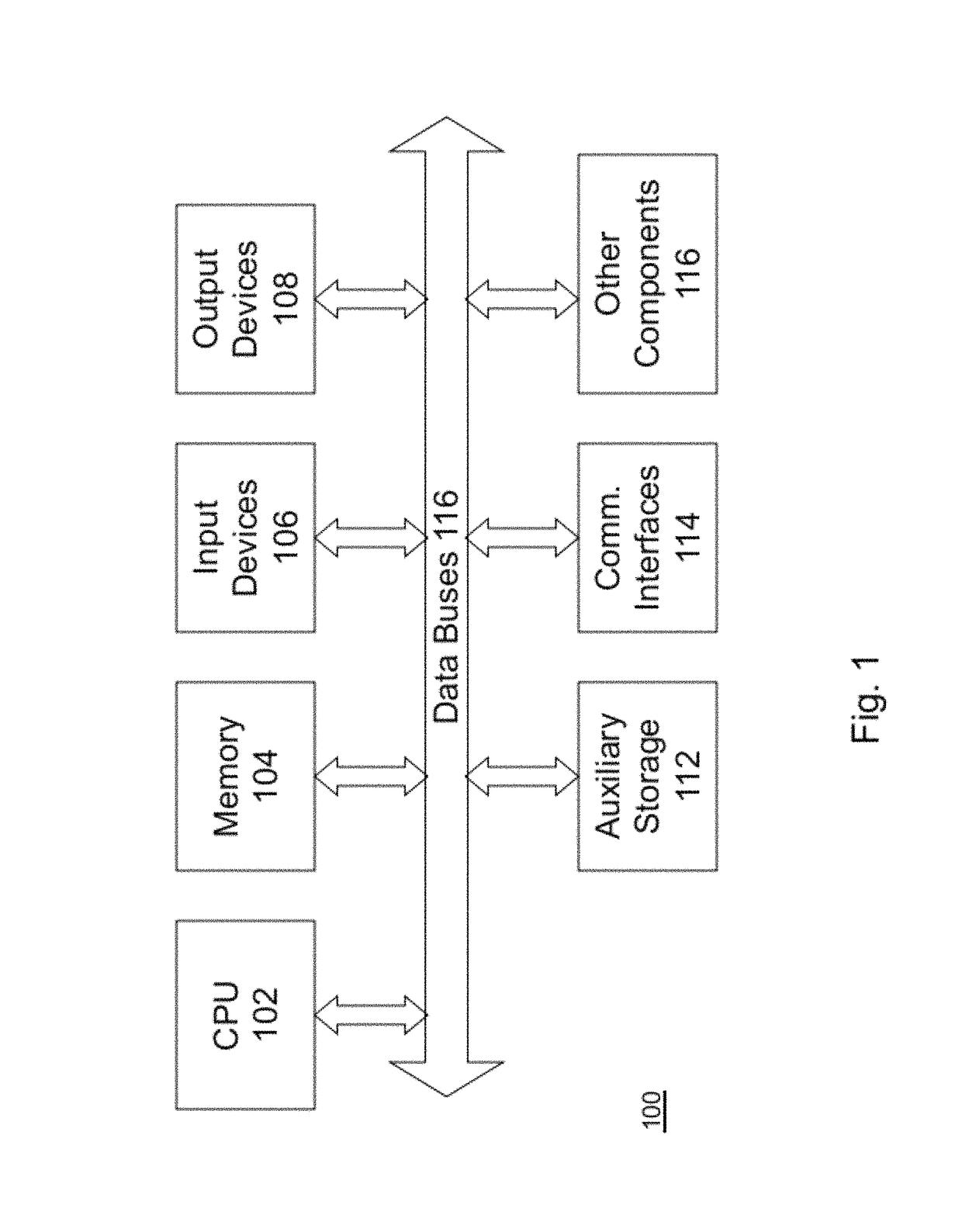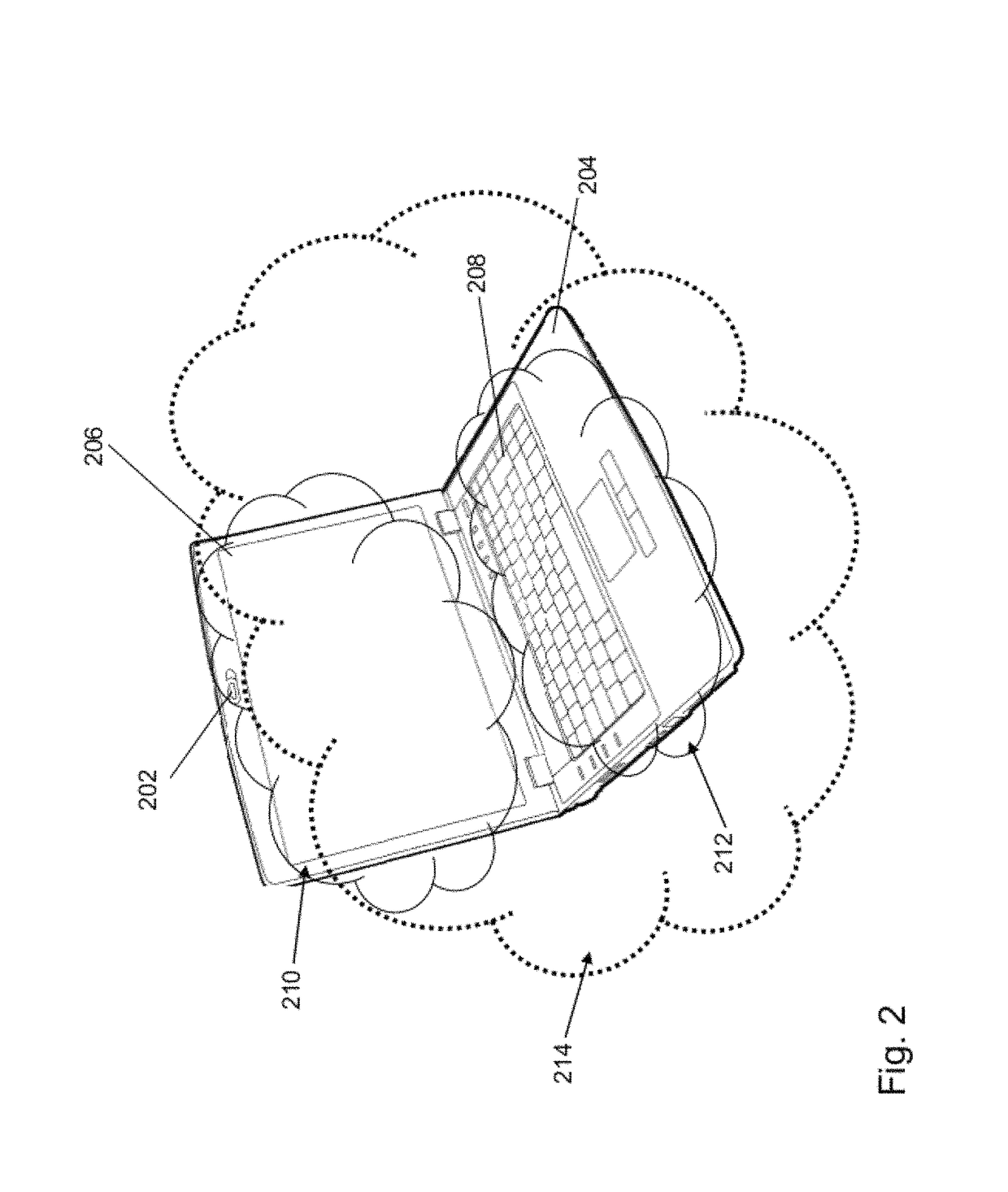Method and system for ergonomic touch-free interface
a touch-free interface and ergonomic technology, applied in the field of image processing and user interfaces, can solve problems such as the inability to adjust the touch-free interface,
- Summary
- Abstract
- Description
- Claims
- Application Information
AI Technical Summary
Benefits of technology
Problems solved by technology
Method used
Image
Examples
Embodiment Construction
[0035]Among other things, the present invention relates to methods, techniques, and algorithms that are intended to be implemented in a digital computer system 100 such as generally shown in FIG. 1. Such a digital computer or embedded device is well-known in the art and may include the following.
[0036]Computer system 100 may include at least one central processing unit 102 but may include many processors or processing cores. Computer system 100 may further include memory 104 in different forms such as RAM, ROM, hard disk, optical drives, and removable drives that may further include drive controllers and other hardware. Auxiliary storage 112 may also be include that can be similar to memory 104 but may be more remotely incorporated such as in a distributed computer system with distributed memory capabilities.
[0037]Computer system 100 may further include at least one output device 108 such as a display unit, video hardware, or other peripherals (e.g., printer). At least one input dev...
PUM
 Login to View More
Login to View More Abstract
Description
Claims
Application Information
 Login to View More
Login to View More - R&D
- Intellectual Property
- Life Sciences
- Materials
- Tech Scout
- Unparalleled Data Quality
- Higher Quality Content
- 60% Fewer Hallucinations
Browse by: Latest US Patents, China's latest patents, Technical Efficacy Thesaurus, Application Domain, Technology Topic, Popular Technical Reports.
© 2025 PatSnap. All rights reserved.Legal|Privacy policy|Modern Slavery Act Transparency Statement|Sitemap|About US| Contact US: help@patsnap.com



